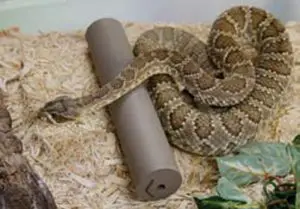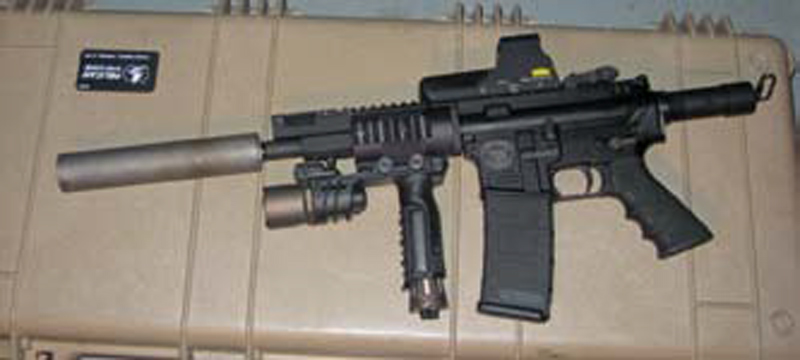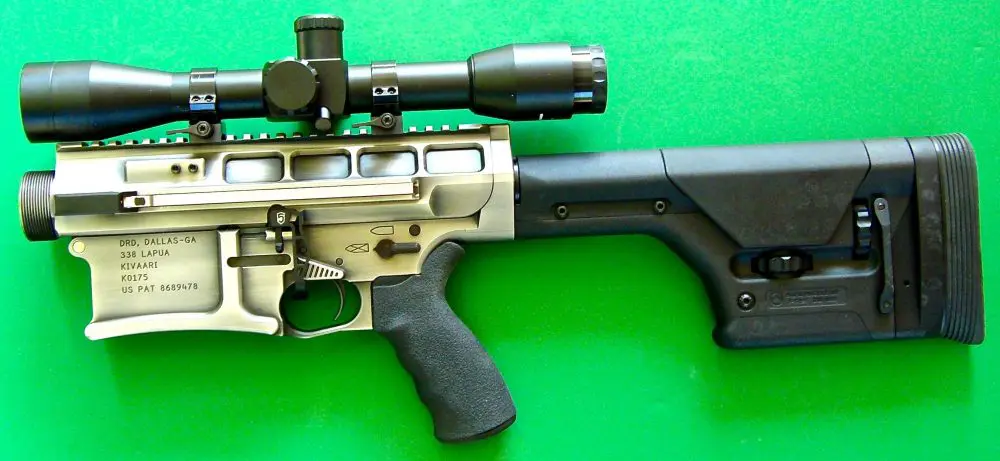
After contacting Scott Sawyer and Brett Miller, owners of CanCorp, the company making the suppressor, I was invited to a private shoot there.
Sawyer and Miller have developed a sound suppressor unlike any I have ever used. Its ability to conceal the shooter’s signature and location was clearly the foundation for this suppressor’s DNA.
We began the day with a simple instruction block and proceeded to shoot a variety of suppressed weapons, starting with a couple of quiet handguns and working up to largebore rifles. The range was 600 yards long and we used every bit of it.



CanCorp’s 7.62mm (.30 caliber) suppressor is actually used on rifles up to .338 Lapua Magnum. They use Type 7 titanium, which keeps the muzzle lighter than most suppressors I have used in the past. The point of impact shift between having the suppressor on and off was 1.5 MOA at 600 yards. That’s very little in my book. The decibel reduction was around 36 dBs. Needless to say, there was absolutely no need for ear pro of any kind except for when the suppressor was not attached.
To show the total capability of the suppressor, I was handed a .308 with a ten-inch barrel. It was a bolt-action rifle that seemed to be based on a Remington 700 action. With the Can- Corp suppressor installed and shooting 220-grain sub-sonic ammo, the report of the weapon vanished. The loudest sound was the bullet’s impact on the steel target. Being that accurate and quiet, I can see why the rumor mill is churning about CanCorp.
The monolithic core with no welds is equally as impressive as the suppressor’s performance. It has the ability to be taken apart for inspection and cleaning purposes. All it takes is a ¾-inch wrench and it’s as simple as threading it out and back in.
Next up was the M4 or AR-15 variant.
CanCorp had SBR piston carbines as well as 20-inch designated marksman rifles on hand for the test. For an endurance test, we used a protocol that consisted of alternating 30 rounds semi-auto and then 30 rounds on full-auto for a total of 600 rounds. I have seen a couple of suppressors fail at this test before they were halfway through.
The suppressor turned from gray to gold, purple and then blue, and was close to 900 degrees when measured at the end. No failures, no loss in sound reduction, and no baffle strikes. It completed all 600 rounds with ease.



After this, a full Beta Mag (100 rounds) was inserted into the LWRC PSD carbine and emptied. Again, no failures. This is why CanCorp utilizes the “no weld” design. Welds can get hot and break under stress and high temperatures, causing a failure in rifle or suppressor. Get rid of the welds, get rid of the problems.
The designated marksman rifles were sighted in unsuppressed. I shot 20 rounds downrange from 100 yards to 300 yards. When I put the can on, I shot the same series as I had done before. This time I had no need to adjust the optic at all. It was completely dead on with no point of impact shift. I removed the suppressor a few times to see if it was repeatable. It was.
Just like the .30-caliber suppressor, it’s possible to use the 5.56mm suppressor on weapons with marginally larger calibers without voiding the warranty. Scott Sawyer took it off the 5.56mm AR and installed it on a .243 Remington, 6.5 Grendal, and 6.8 Rem. They were all very quiet and accurate. The Desert Tactical SRS he was shooting in .243 was actually the quietest weapon fired that day.
Typically a -37 dB reduction and as low as a -39 dB reduction were experienced. This one suppressor accommodates all of these calibers very well with no harm to the can.
After seeing that display of multi-caliber acceptance, I thought that all my barrels would need to be threaded the same for that to work. However, Can- Corp advised that the end caps can be switched to accept a variety of threaded barrels, so there is no need to get all your barrels threaded the same. With the quick-disconnect end cap installed. it will fit over any standard NATO birdcage flash hider. As far as mounting options go, all the bases are covered to adapt a single suppressor to a variety of host weapons.
Sound suppressors have always had a role in tactical operations. The ability to reduce the report of a rifle conceals the shooter’s location, eases the communications within a firing team, eliminates muzzle flash in nighttime operations, and protects from ear shock and hearing loss.
The suppressors will be offered with several different finishes for the individual to choose from. Stealth Black, Mojave Tan, Viper Green, and Matte Gray are offered as factory finishes with no added cost.
CanCorp’s customers and contracts remain confidential, but I can tell you that they have the technology and staff to do some amazing things in the firearms industry. CanCorp is no doubt on their way to set a new standard in sound suppression systems. Look for their line to be released to the civilian market later this year.





